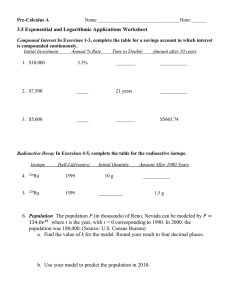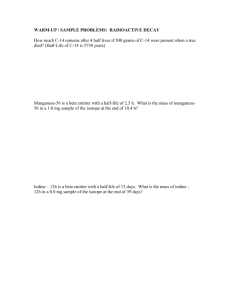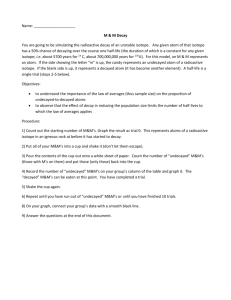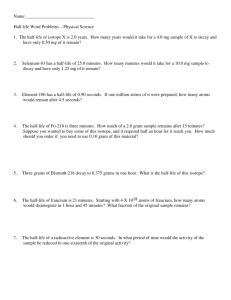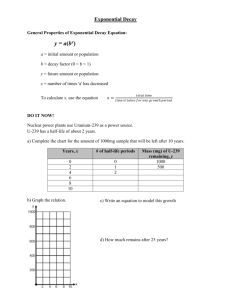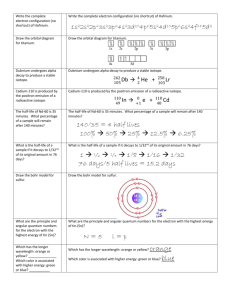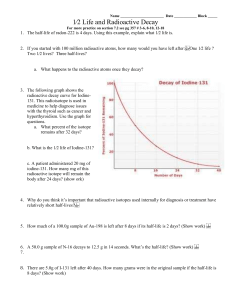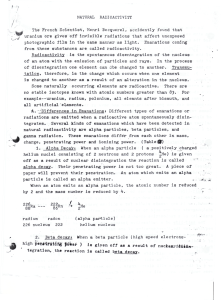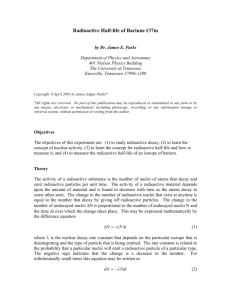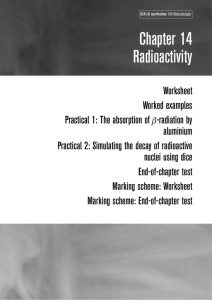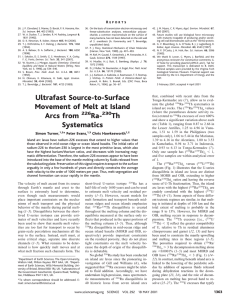Exponential Models
advertisement
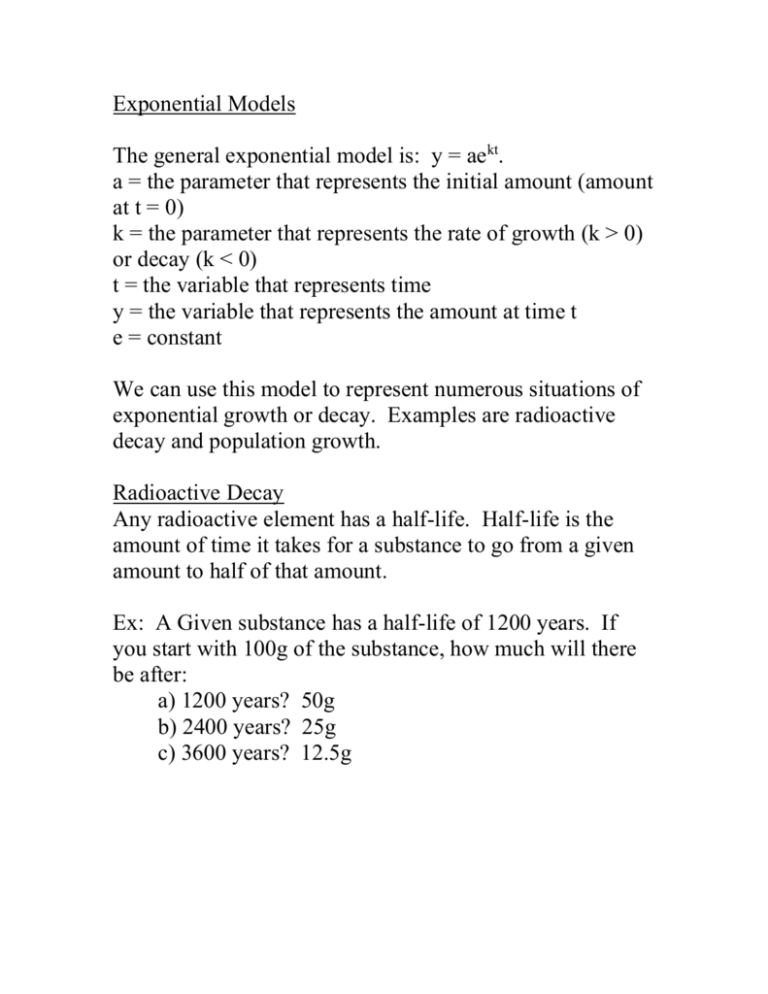
Exponential Models The general exponential model is: y = aekt. a = the parameter that represents the initial amount (amount at t = 0) k = the parameter that represents the rate of growth (k > 0) or decay (k < 0) t = the variable that represents time y = the variable that represents the amount at time t e = constant We can use this model to represent numerous situations of exponential growth or decay. Examples are radioactive decay and population growth. Radioactive Decay Any radioactive element has a half-life. Half-life is the amount of time it takes for a substance to go from a given amount to half of that amount. Ex: A Given substance has a half-life of 1200 years. If you start with 100g of the substance, how much will there be after: a) 1200 years? 50g b) 2400 years? 25g c) 3600 years? 12.5g Radium is a radioactive isotope. 226Ra (read as Radium 226) is the most stable isotope of Radium. The 226 is its atomic mass, which means it has a total of 226 protons and neutrons. This isotope decays into radon gas. 1) 226Ra has a half-life of 1620 years. If there is an initial quantity of 24g, how much will there be in 1000 years? Model: y = 24ekt The first step of every problem involving radioactivity is to use the half-life to find the value of k. 12 = 24ek(1620) ½ = ek(1620) ln(½) = ln(e1620k) 1620k = ln(½) 1 ln 2 k ≈ 1620 -.0004 (Store this value!) Now our model is complete, so we can find the amount after 1000 years. y = 24e -.0004(1000) ≈ 15.646 g 2) 226Ra has a half-life of 1620 years. If there will be 50g in 700 years, what is the initial amount? Since we already know the value of k, we can use this to answer the question. If we didn’t already know it, we would find k first. Model: y = ae -.0004t 50 = ae -.0004(700) 50 a ≈ 67.460 g e .0004( 700) 3) Let t = 0 be the year 1990. If there were 700 students in AHS in 1990, and 825 students in the year 2000, predict the number of students in AHS in 2010. Model: y = 700ekt We will use the given information to find k, and then use the completed model to answer the question. 825 = 700ek(10) t = 10) (Since the year 2000 corresponds to 825 e10k 700 825 10 k ln ln e 700 825 10k ln 700 825 ln 700 k .016 10 Since the year 2010 corresponds to t = 20, y = 700e .016(20) ≈ 963.989 students

